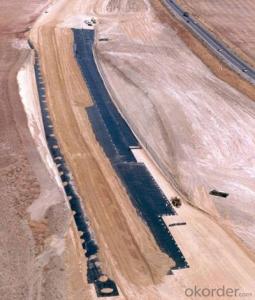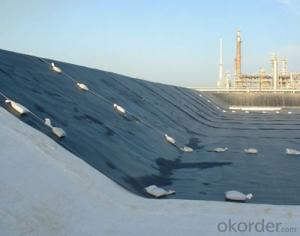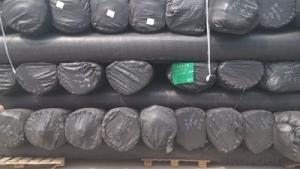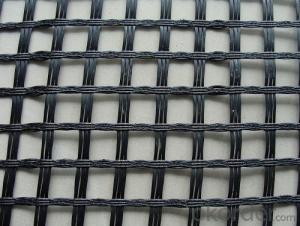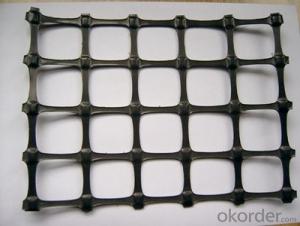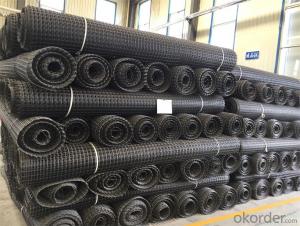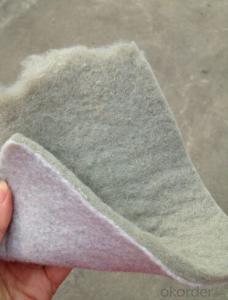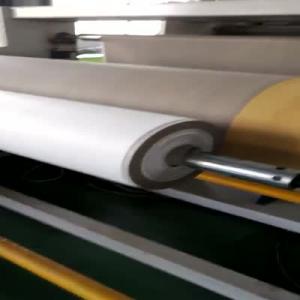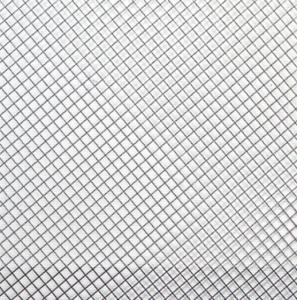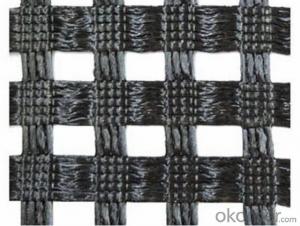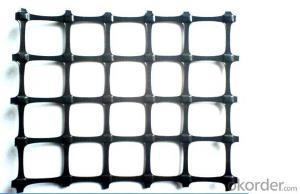HDPE Textured Geomembrane for River tunnel canel
- Loading Port:
- Tianjin
- Payment Terms:
- TT OR LC
- Min Order Qty:
- 88 m²
- Supply Capability:
- 1800000 m²/month
OKorder Service Pledge
OKorder Financial Service
You Might Also Like
The structure of HDPE Textured Geomembrane for River tunnel canel description :
One side or two sides uniformly textu red surface by special blow technology.
Specification of HDPE Textured Geomembrane for River tunnel canel:
I. Thickness: 1.0mm t0 3. 0mm
2.4m-9m in width, roll length as design or client ' s request
Feature of Property of HDPE Textured Geomembrane for River tunnel canel:
I. High flexibility, high waterproof coefficient
2. Could be used in the temperature of -700C - IIOoC
3. Good stability, anti acid and alkalis, anti-erosion
4. High climate bearing ability, excellent in anti-aging
5. High tensile strength and elongation, can be used in bad geology and climate, especially be
Used in the soil uneven sedimentation
6. High friction coefficient
Application of HDPE Textured Geomembrane for River tunnel canel:
I. M unicipal p rojects
2. Landfill treatment projects
3. Waste water treatment
4. Mineral waterproofing
Production standard of HDPE Textured Geomembrane for River tunnel canel:
I. GB/T17643-2011 ( GH-2T1 and GH-2T2 )
2. CJ/T234-2006
3. GRI-GMB
Area |
|
Hydraulic | Lagooning and Water Treatment, Ornamental Ponds, Golf Courses Aquaculture and Desalination Water LagoonsTanks, Reservoirs, Liquid WasteFloating Cover SolutionsDrainage and FiltrationShading Cover Solutions |
Environment | Tailing ponds, Leach mining,Landfills,Landfill Capping,Protection against corrosion,Vertical Barriers |
Civil Works | Erosion Control, Secondary Containment, Tunnels,Linear and Surface Works,Consolidation of Margins,Soil Reinforcement,Soil Separation. |
Building | Parkings,Roofing,Soundproofing building |
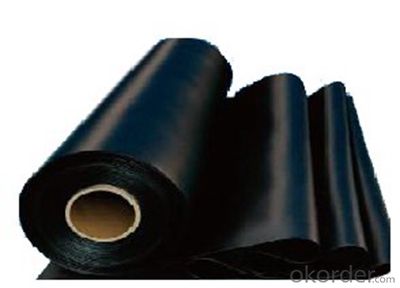
Introduction of CNBM
China National Building Materials (Group) Corporation (CNBM) is a state-owned enterprise in charge of administrative affairs in China building materials industry. Established in 1984, CNBM is a large group corporation of building materials with total assets of RMB 25 billion and a total staff of 30,000. Now CNBM owns more than 200 subsidiaries in and abroad the country, including wholly-owned corporations and joint ventures.
FAQ of geosynthetics :
What is geosynthetics ?
Geosynthetics form a perfect erosion control fabric used extremely widely in civil engineering to stabilize and reinforce slopes and soil under or next to roads, railways, dams, water reservoirs etc.. They can be easily applied which minimizes the time of construction, as well as they limit the resources and materials necessary.
What kinds of geosynthetics we have ?
Non-woven geotextile, geogrids, geocells, GCL, Geomembranes, Geonets, Geocomposites etc .
What is the geosynthetics used for ?
Hydraulic
Lagooning and Water Treatment, Ornamental Ponds, Golf Courses
Aquaculture and Desalination,Water Lagoons,Tanks, Reservoirs, Liquid Waste,Floating Cover Solutions, Drainage and Filtration
Environment
Tailing ponds, Leach mining,Landfills,Landfill Capping,Protection against corrosion,Vertical Barriers
Civil Works
Erosion Control,Secondary Containment,Tunnels,Linear and Surface Works,Consolidation of Margins,Soil Reinforcement,Soil Separation.
Building - Parkings,Roofing,Soundproofing
- Q:How are geogrids used in civil engineering?
- Geogrids are extensively used in civil engineering for reinforcing soil structures, such as retaining walls, slopes, and pavements. These geosynthetic materials provide increased stability and load-bearing capacity to the soil, preventing erosion and improving overall structural integrity. They are typically incorporated into the soil layers during construction, acting as a reinforcement to distribute the loads more effectively and reduce potential settlement or failure.
- Q:Can geogrids be used in reinforcement of embankments on collapsible soils?
- Yes, geogrids can be used in the reinforcement of embankments on collapsible soils. Geogrids provide additional stability and strength to the embankment, helping to prevent soil collapse and reduce potential settlement. By distributing loads more evenly, geogrids can effectively reinforce the embankment and improve its overall performance on collapsible soils.
- Q:Do geogrids provide reinforcement to geosynthetic clay liners?
- Yes, geogrids can provide reinforcement to geosynthetic clay liners. Geogrids are typically used to enhance the stability and strength of geosynthetic clay liners by providing additional tensile strength and reducing the potential for lateral movement. This reinforcement helps to improve the overall performance and longevity of the liner system.
- Q:How do geogrids withstand environmental factors such as UV radiation?
- Geogrids are designed to withstand environmental factors such as UV radiation through the incorporation of UV stabilizers in their manufacturing process. These stabilizers prevent or delay the degradation of the geogrids by UV radiation, enabling them to maintain their strength and durability over an extended period of time.
- Q:Are geogrids resistant to chemical degradation?
- Yes, geogrids are generally resistant to chemical degradation. They are designed to withstand exposure to various chemicals, including acids, alkalis, and hydrocarbons, without significant deterioration or loss of strength. However, the specific resistance may vary depending on the type of geogrid and the specific chemicals involved.
- Q:How do geogrids reduce settlement in embankments?
- Geogrids reduce settlement in embankments by providing reinforcement and improving stability. They distribute loads more evenly across the soil, preventing excessive consolidation and settlement. Moreover, the geogrids also enhance the bearing capacity of the embankment, preventing soil failure and reducing settlement further.
- Q:Can geogrids be used in reinforced concrete structures?
- Yes, geogrids can be used in reinforced concrete structures. Geogrids are commonly used as a reinforcing material in concrete structures to enhance their load-bearing capacity and reduce cracking. They provide additional tensile strength and help distribute the applied loads more efficiently, improving the overall structural performance.
- Q:What is the difference between geotextiles and geogrids?
- Engineering applications: highway, railway, bridge, road, pier, dam, slag field, such as soft soil foundation reinforcement, retaining wall and pavement crack resistance engineering and other fields. Glass fiber mesh used in exterior wall, interior wall paint, mainly to prevent cracking, different materials at the junction of mortar plastering material hollowing. Local node reinforcement will also be used. Geotextile has excellent filtration, drainage, isolation, reinforcement, seepage prevention, protection, light weight, high tensile strength, good permeability, high temperature resistance, anti freezing, anti-aging, corrosion resistance. Common non-wovenUsed in the water layer, polyethylene polypropylene fiber waterproof is also used.
- Q:How do geogrids enhance the performance of geocells?
- Geogrids enhance the performance of geocells by providing additional reinforcement and stability to the structure. They are placed within the geocells to distribute the load more evenly, prevent lateral movement of soil particles, and increase the overall strength of the geocell system. This reinforcement improves the load-bearing capacity, reduces settlement and deformation, and enhances the overall performance of geocells in various applications such as soil stabilization, erosion control, and retaining wall construction.
- Q:What is the tensile strength of geogrids?
- The tensile strength of geogrids can vary depending on the specific type and design, but generally, it ranges from 20 to 200 kilonewtons per meter.
1. Manufacturer Overview |
|
|---|---|
| Location | |
| Year Established | |
| Annual Output Value | |
| Main Markets | |
| Company Certifications | |
2. Manufacturer Certificates |
|
|---|---|
| a) Certification Name | |
| Range | |
| Reference | |
| Validity Period | |
3. Manufacturer Capability |
|
|---|---|
| a)Trade Capacity | |
| Nearest Port | |
| Export Percentage | |
| No.of Employees in Trade Department | |
| Language Spoken: | |
| b)Factory Information | |
| Factory Size: | |
| No. of Production Lines | |
| Contract Manufacturing | |
| Product Price Range | |
Send your message to us
HDPE Textured Geomembrane for River tunnel canel
- Loading Port:
- Tianjin
- Payment Terms:
- TT OR LC
- Min Order Qty:
- 88 m²
- Supply Capability:
- 1800000 m²/month
OKorder Service Pledge
OKorder Financial Service
Similar products
New products
Hot products
Hot Searches
Related keywords
